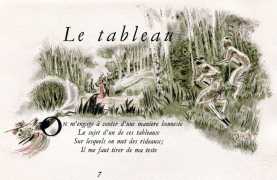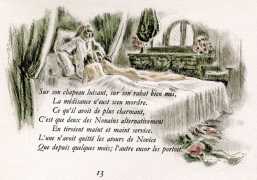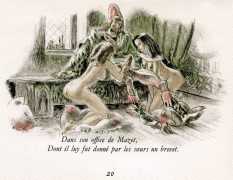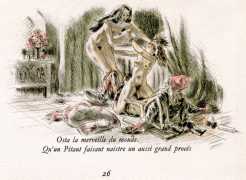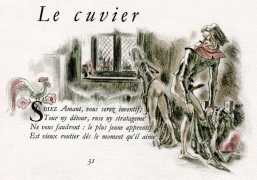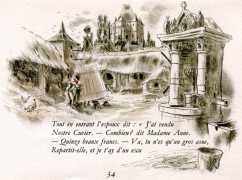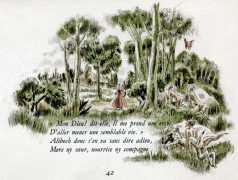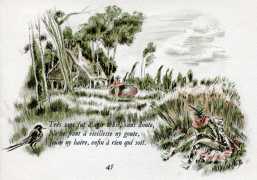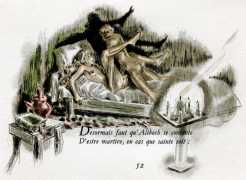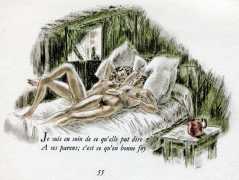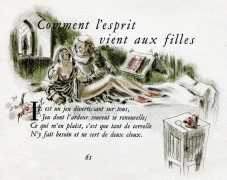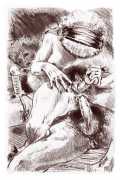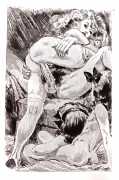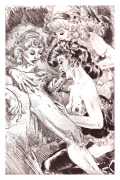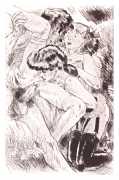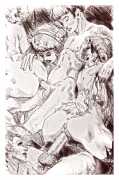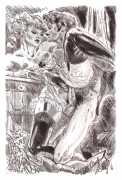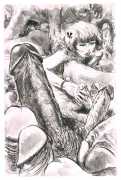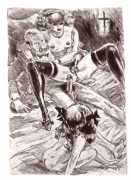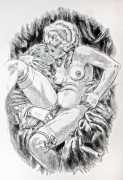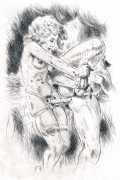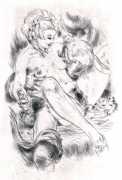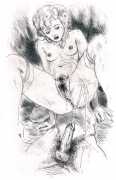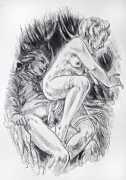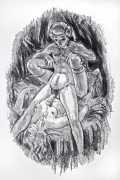Sometimes we have to admit defeat, and finding any useful biographical information about Jean Traynier is one of those times. It seems strange that a clearly talented artist who illustrated more than thirty books over three decades should disappear completely into the mists of anonymity. Is the rare surname ‘Traynier’ a variant of the more common ‘Tranier’, or is the whole name a pseudonym? From the period in which he was working, we would guess his dates to be around 1910–70, but otherwise the only solid evidence we have is his published work.

Traynier’s initial book commission was in 1942, for an edition of Prosper Mérimée’s novel Columba, followed a year later by Mérimée’s most famous work, Carmen, which provided the first opportunity for selective nudity. Further commissions in the 1940s included Albert Samain’s Au jardin de l’infante, Balzac’s Eugénie Grandet, and a stylish Cantique de cantiques, but by far his most successful was the illustrations for Le soldat de la neige: le héros des Alpes (Soldier in the Snow: The Hero of the Alps), Paul Achard’s 1945 biography of his flying ace father Albert.
His first explicitly erotic commission came in 1945, when he was asked to illustrate a privately-published edition of La Fontaine’s more risqué tales; Le tableau suivi d’autres contes (The Painting, together with Other Tales). This was followed the next year by Antoine de la Sale’s Les quinze joies de mariage (The Fifteen Joys of Marriage); de la Sale was a fifteenth-century courtier, and wrote about the appropriate way to behave in high society.
The only two explicitly erotic sets of illustrations that Jean Traynier (or ‘Jean Traynier’) produced were in 1949 and 1957, for an edition of Pierre Louÿs’ Cydalise and a new edition of Vivant Denon’s Point de lendemain. Clearly by the same artist as his other commissions of the period, they demonstrate his ability to embrace his erotic imagination and passion to the full when given the opportunity.
After the late 1950s Traynier appears only to have illustrated travel guides and children’s books; maybe Cydalise and Point de lendemain got something out of his system that he didn’t need to repeat.
If any of our visitors have further information about Jean Traynier, we would love to hear from you.


